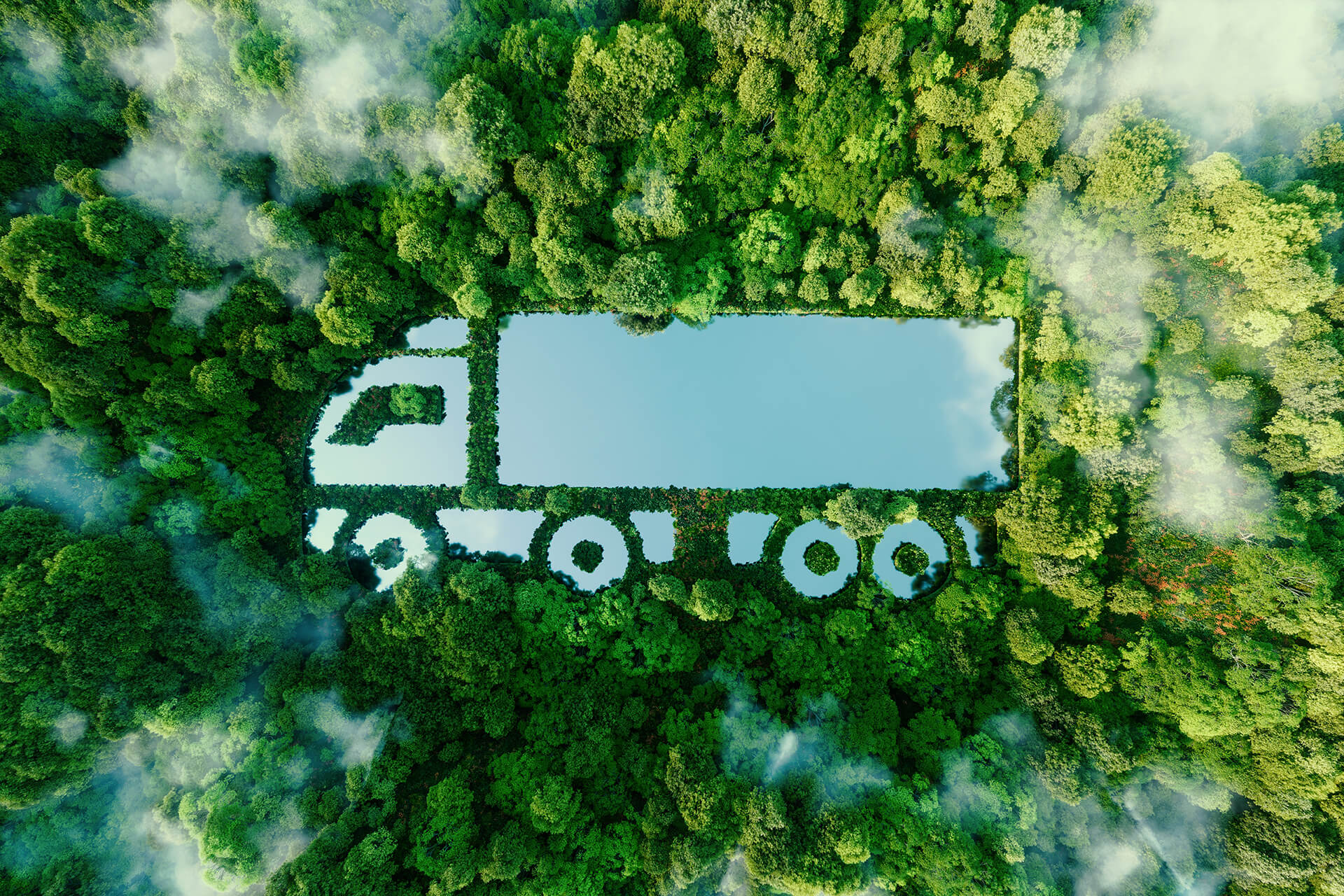Sustainability is more than a mere buzzword. And it isn’t a new government fad to annoy the logistics industry either. Anyone who has children today must worry about their future: From climate change and extreme weather events to mass extinction, desertification and wars about dwindling water resources, we all have understood that sustainability is a very serious topic. A matter of survival. And every one of us bears some of the responsibility to make sure that our children and grandchildren will have a fair chance to survive in a world that is still worth living in.
This responsibility is of special concern for the logistics industry. You MUST keep your vehicles going – that is your business. Goods must be picked up and delivered. For the time being, there are no truly eco-friendly lorries available anywhere. For logistics companies, the only way to address the issue is to cover as many kilometres as possible with as little fuel as possible while minimising noxious emissions, especially CO2.
The good news is: Saving fuel and emissions means saving money. This is why sustainable driving practices and vehicle deployments are actually a win-win approach, helping both, the environment and your bottom line. So – what can you do?
Drivers can learn fuel-saving, low-emission driving strategies. There are any number of tricks and ways to reduce fuel consumption while driving a truck – or waiting at the traffic light. This is why it pays to have your drivers take appropriate courses.
You can also take steps to make sure you deliver as many goods as possible while covering the lowest possible number of kilometres. That is a bit more difficult – your dispatchers rack their brains over it night after night. Doing more in this respect may mean saying goodbye to old habits, such as delivery zones which we all are familiar with. But to get there you need powerful software that can do more than just distribute load units across trucks. You need software that can think for itself and combine cargo space optimisation with route optimisation so that, at the end of the day, no kilometre will be wasted. That will make your operations quite a bit more sustainable. And more economical. The current diesel prices speak for themselves. And chances are they will not drop significantly in the foreseeable future.
Off-the-shelf route planning and dispatching tools have their limits when it comes to minimising the number of driven kilometres. When they were developed, fuel prices were not much of a concern, and sustainability was a rainy-day topic.
Times have changed. Words like “sustainability” and “efficiency” have quite a different ring nowadays. Sustainability in particular has become a constant in entrepreneurial thinking. In the face of operating costs rising year after year, it is time to take the next step and make the best of your existing optimisation options. Smart software can help you squeeze every bit of extra efficiency out of your fleet without having to reinvent your business processes. For example, you can use Smartlane Transport Intelligence to optimise your dispatch results sustainably – in other words, to maximise your transport performance while minimising vehicle kilometres. You can even do so in a very convenient way because Smartlane software is flexible and can be adjusted to suit your processes. It makes your dispatchers’ lives easier while putting more cargo from the depot on the road (and vice versa) every day. Without requiring massive user training.
Give it a chance – your fleet can be more eco-friendly, and your company can operate more sustainably. Smartlane will gladly show you how you can minimise your CO2 emissions per tonne of cargo. That is because integrated Artificial Intelligence makes Smartlane Transport Intelligence learn day after day and apply the identified patterns to your daily dispatch process. It makes a valuable contribution to sustainable, efficient logistics operations.
